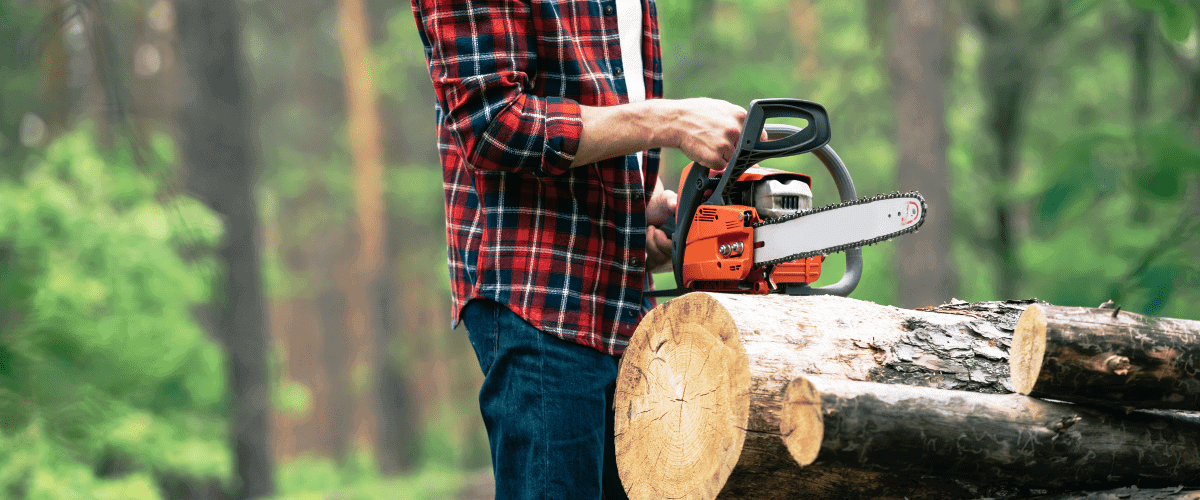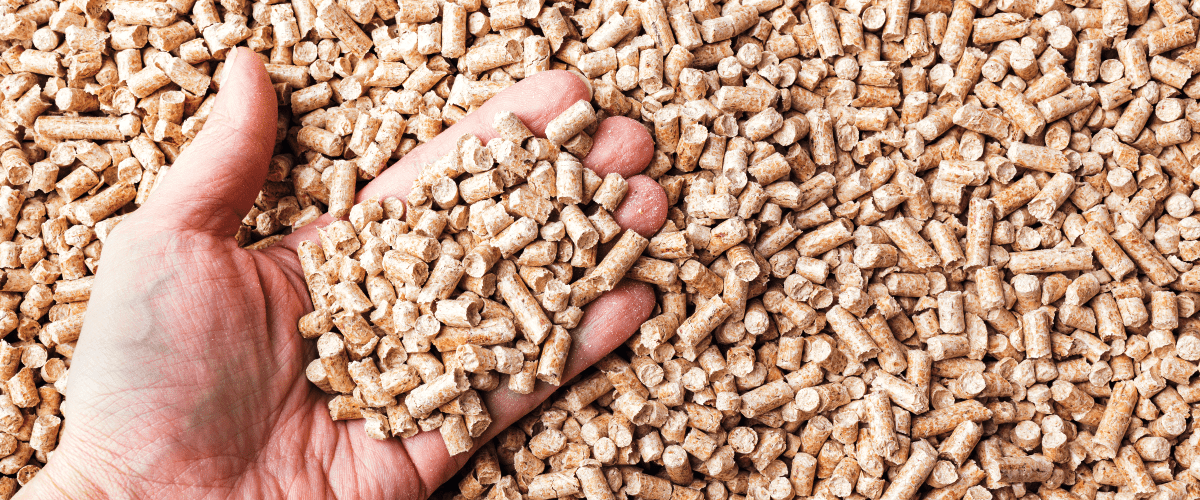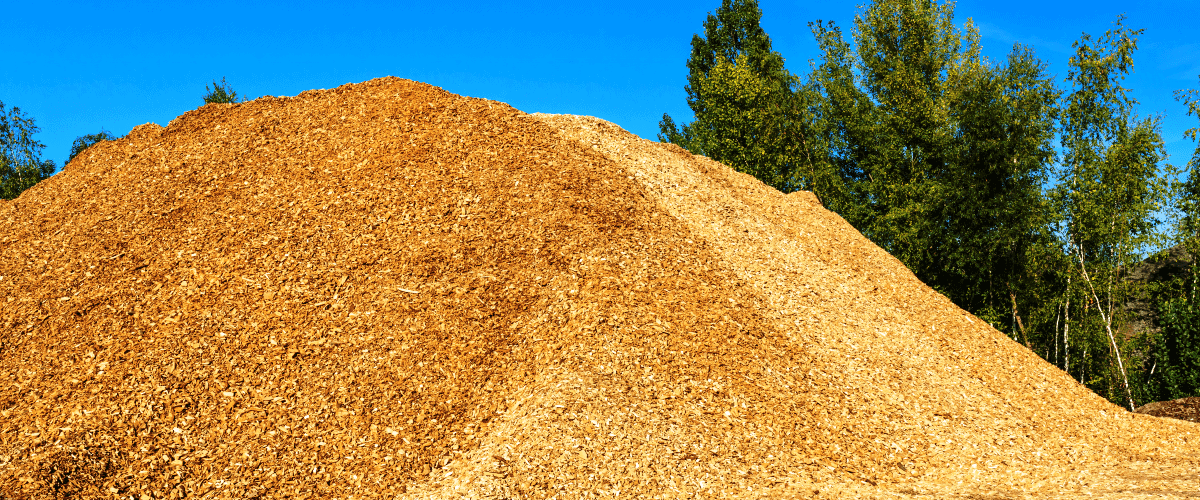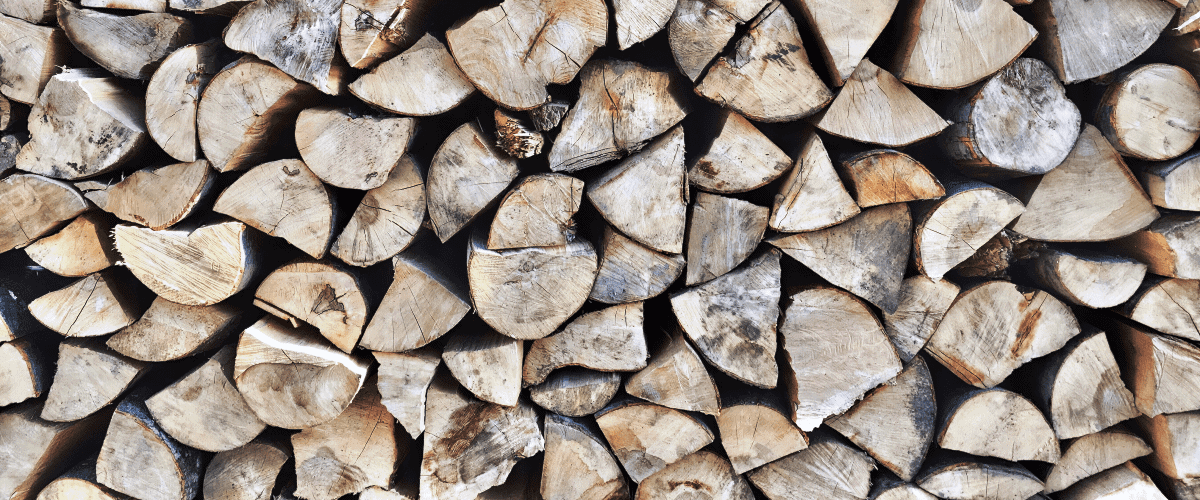
Viva Trees
Get a FREE professional tree service estimate from Viva Trees - one of the most trusted tree companies in the U.S.
OR CALL
Get a Free Estimate
Every project starts with a free tree service estimate. Enter your details to get started.

Get a FREE professional tree service estimate from Viva Trees - one of the most trusted tree companies in the U.S.
OR CALL
Every project starts with a free tree service estimate. Enter your details to get started.

Recycling isn’t just about tossing aluminum cans or plastic bottles into the right bin — it can be so much more than that! Reusing tree materials allows us to create something entirely new while reducing the amount of wood harvested and processed. This not only helps preserve nature but also supports sustainable living practices. Plus, by giving used or discarded items a second chance, we benefit local economies and ourselves!
Sustainable tree care practices help the environment and benefit your trees’ long-term health and beauty. Check out our new page on the advantages of implementing sustainable tree care strategies to learn more about how you can positively impact your property and the world.
So let’s explore some unique ways to recycle and reuse tree materials. We’ll learn how to turn everyday waste into something useful for our homes and businesses. And perhaps most importantly, we’ll discover how each of us can make an impact by taking small steps towards sustainability every day. Join me on this journey, and together, let’s embrace the power of upcycling!
Recycling and reusing tree materials is a process that could bring tremendous value to society if done correctly. It involves taking discarded wood, bark, twigs, leaves, branches, and more from trees that have been cut down or otherwise removed and repurposing them into something of use again. This concept can help reduce waste in landfills and provide an alternative form of income for those who can put these materials to good use. But what does it mean to recycle and reuse tree materials?
In simplest terms, recycling means breaking down the material into smaller components so they may be reused in other ways. Reuse refers to finding new uses for existing materials without breaking them down first. For example, fallen logs might become planks used in furniture construction; sawdust could be turned into mulch or animal bedding, while branches can be transformed into decorative wreaths or bird feeders. The possibilities for finding creative ways to utilize recycled and reused tree materials are endless.
The key takeaway is that recycling and reusing tree materials helps us create sustainable solutions and preserve natural resources. By upcycling these items instead of throwing them away, we can extend their life span even further – turning waste into valuable assets with each passing cycle! With this understanding, let’s look at how else we can benefit by turning waste into value.
Recycling and reusing tree materials have many benefits. Turning waste into value reduces the amount of waste going to landfills and helps protect our environment while providing economic gains.
Here are four advantages of recycling and reusing tree materials:
Reducing Waste: Tree materials that would otherwise be thrown away can be recycled or reused, which reduces the amount of waste ending up in landfills.
Environmental Benefits: Reusing tree materials instead of buying new products contributes to resource conservation by reducing reliance on virgin resources. This helps reduce air pollution associated with manufacturing processes and water contamination from runoff sites near production plants.
Resource Conservation: Recycled wood is renewable since it comes from trees already harvested for other uses such as construction lumber or furniture making. Using previously cut timber, we decrease deforestation and help preserve wildlife habitat.
Economic Gains & Cost Savings: Using recycled wood can save money through reduced transportation costs since raw materials don’t need to be shipped long distances. It also enables us to create high-quality products at lower prices because there’s no need to purchase expensive raw material inputs like petroleum or plastic resins used in synthetic composites.
The potential of using recycled wood for various projects is immense and far-reaching—from producing building supplies to crafting artwork and furniture pieces. With these environmental and economic benefits, it’s easy to see why turning waste into a value is attractive for those looking for cost savings without sacrificing quality or sustainability goals.

We can find a plethora of potential in the discarded materials from trees. Tree waste, such as wood and branch pieces, has many uses for recycling and reusing. Wood chips from tree prunings can be used for mulching gardens or landscaping projects, providing natural insulation for soil habitats and helping retain nutrients.
Additionally, tree bark can be chipped into smaller pieces which can then be utilized to craft beautiful decorations like furniture and accents.
The possibilities with these materials extend beyond their use in gardening projects too. For instance, manufacturers often reuse sawdust created during lumber processing to create products like particle board and paper pulp. Furthermore, tree branches can be cut into firewood logs, providing heat energy source options for households looking to reduce their reliance on fossil fuels.
These different types of materials have an undeniable value when it comes to repurposing them – not only do they help us save resources and provide unique opportunities for creating new items out of something we would normally discard.
Moreover, utilizing these sorts of sustainable practices helps us protect our environment while still allowing us to use what nature provides us. Transforming this overlooked resource into helpful something will enable us to show how much we care about preserving our planet’s precious resources and protecting its inhabitants at the same time.
Recycling and reusing tree materials is an integral part of sustainability. To achieve this, processes are involved in recycling and reusing these materials. This section will explore the processes behind recycling and reusing tree materials to turn waste into value.
The first step of the process involves learning about the different types of recycling strategies available for each type of tree material. Different trees require specific techniques when it comes to recycling them correctly.
For example, hardwoods such as oak must be chipped or shredded before being recycled into mulch or composting material.
Softwoods like pine must also be chipped but can be used for alternative purposes such as fuel wood products or animal bedding. Knowing which strategy works best for a particular type of tree material is crucial for successful recycling efforts.
Reusing tree materials follows similar steps to those involved in recycling. However, it requires more creativity since you must devise ways to repurpose certain items that would otherwise go to waste. Some common examples include using old branches from fallen trees as firewood or making furniture out of reclaimed lumber from urban forests.
Other ideas include creating birdhouses from leftover bits of wood or turning logs into decorative planters for your garden. There are numerous possibilities for reusing tree materials – all you need is imagination!
These processes help us transform wasted resources into something useful and valuable while preserving our environment by reducing waste going into landfills. With thoughtful planning and creative reuse strategies, we can ensure that no matter what kind of tree material we’re dealing with, there’s always a way to give it new life and purpose beyond its original use.

Having discussed the processes involved in recycling and reusing tree materials, we now focus on what can be produced from these recycled and reused materials. From wood chips, sawdust, and other waste products of timber processing, a variety of end products can be created, including paper pulp for use in making paper or cardboard boxes, wood-paneling for construction purposes, fuel pellets for biofuel production, furniture parts for furniture-making as well as various kinds of finished timber-products such as flooring boards or outdoor deckings.
The range of end products available from recycled and reused tree materials is immense; it all depends on how much effort one wishes to put into turning them into valuable items. For instance, if the goal were to produce fuel pellets, the steps would involve grinding the waste material into smaller pieces before pressing them together using heat and pressure.
On the other hand, if the goal were to make furniture out of recycled wood, this would involve cutting down more significant chunks of wood into usable sizes before shaping them with tools according to specific design plans.
In either case, there are many benefits associated with producing end products from recycled and reused tree materials instead of relying solely on new resources taken directly from nature. It reduces water wastage, air pollution, and energy consumption, and it also helps conserve forests by providing an alternate source of raw material that could otherwise have gone to waste.
Thus not only is it beneficial economically but also environmentally. With that thought in mind, let us explore the environmental impacts of reusing tree materials.
Reusing tree materials has numerous environmental benefits. Not only does it help to reduce the amount of waste that ends up in landfills, but it also helps to decrease our carbon footprint. We can reduce the need for non-renewable resources like oil and gas by utilizing renewable resources like wood and paper. This reduces greenhouse gas emissions and helps promote sustainable forestry practices. Moreover, recycling and reusing tree materials decrease air pollution by reducing the number of trees burned or chopped down to produce new items.
Furthermore, repurposing old tree materials requires less energy than producing them from scratch. Recycling these materials allows us to use fewer natural resources since they are already made and ready to be reused, saving time and money while preserving the environment.
Additionally, reuse programs use existing infrastructure that may otherwise have been discarded or left unused; this furthers resource efficiency without creating additional costs or damaging ecosystems with its production process.
Finally, reusing tree materials is an excellent way to conserve water usage associated with manufacturing processes since no harvesting of raw materials is required when using recycled goods. All these factors contribute towards making eco-friendly tree reuse a viable option for helping reduce our global carbon footprint whilst promoting sustainable practices for turning waste into value.
Sustainability has become increasingly important in recent decades, and it is no surprise that this includes finding ways to recycle and reuse tree waste. Various sustainable practices are available for turning tree waste into value.
Recycling strategies such as creating mulch from bark or wood chips can benefit gardens and outdoor areas. Reusing initiatives like producing furniture, flooring, and other products using sawdust could help reduce the number of new materials needed and reduce costs associated with buying new materials.
Another potential solution is converting dead trees into firewood which can then be sold at local markets or given away to those who need it most. These ideas provide great opportunities to use existing resources rather than relying on newly produced items with an environmental cost. In addition, these recycling and reusing strategies often bring economic benefits by providing low-cost products or services to local communities.
These solutions show how we can turn what was once considered trash into something useful, beneficial, and valuable. With thoughtful planning and creative approaches, there’s no limit to what we can do to transform our environment for the better.
Transitioning seamlessly into the subsequent section about challenges in implementing recycling and reusing strategies, it quickly becomes apparent that not all solutions will have smooth sailing ahead…

Implementing recycling and reusing strategies to turn waste into value presents some unique logistical challenges. Cost implications are associated with reusing, sorting, and transporting materials.
Additionally, resources that can be used for such activities may be scarce in certain regions where access to recyclable material is limited or non-existent. Public awareness about the benefits of this type of activity also plays an important role. If people do not understand why recycling or reusing tree materials is beneficial, they will have little incentive to participate in these efforts.
Skill shortages can present another challenge when implementing a successful recycling program. For example, individuals with expertise in carpentry who know how to craft products from recycled materials might be difficult to find depending on location. This means there may need to be additional training provided by those responsible for implementing the strategy if the results meet expectations.
Finally, regulations governing the use of tree materials for recycling and reuse must also be considered since these will affect what projects can proceed without any legal issues arising from their completion. Crafting policies around these rules is a critical step towards ensuring all stakeholders involved in turning waste into value can always act within compliance.
Like a phoenix rising from the ashes, recycling and reusing tree materials can be precious. Governments worldwide have recognized this potential and are actively working to promote responsible recycling and reuse of tree waste through regulations. This section will discuss regulations governing tree material used for recycling and reuse.
| Regulation | Description | Impact on Reuse/Recycling |
|---|---|---|
| Tree Waste Regulations | Establish requirements for managing tree waste, such as collection, transport, storage, segregation, treatment, and disposal. | Ensures proper handling of trees during their cycle to help reduce environmental impacts associated with them. It also guides how to recycle or reuse wood waste products properly. |
| Reuse Regulations | Set standards for acceptable quality levels when it comes to reused materials. Includes guidelines for testing used items to ensure they meet safety standards before being put back into service again. | Ensures that any recycled materials do not risk people’s health or environment due to contamination or other problems related to wear and tear on the item in question. Additionally helps protect companies by ensuring they don’t unknowingly purchase substandard products, which may lead to costly recalls later down the road. |
| Recycling Regulations | Outline rules governing how recyclable materials should be handled at the source (where they were generated) and at the destination (where they are sent). For example, setting limits on contaminants allowed in collected materials so that only high-quality recyclables make it through the process without contaminating other resources in the system. Additionally covers issues such as taxes levied on a specific type of recyclables which can increase costs for those who wish to turn waste into value initiatives. | It helps keep contamination out of our ecosystems while incentivizing companies interested in utilizing waste into value initiatives by reducing overall costs associated with collecting and processing recyclables. |
The above table outlines critical regulations governing the use of tree materials for recycling and reuse, highlighting essential considerations businesses need to consider when developing strategies related to these activities. Moving forward, we will explore opportunities for companies tapping into this market space by creating meaningful change within their communities via sustainable practices like turning waste into value initiatives!

Businesses of all sizes can benefit from the increasing trend of recycling and reusing tree materials by utilizing waste-to-value initiatives. By repurposing wood products such as lumber, sawdust, chips, and bark, companies can generate additional revenue streams while reducing their environmental impact. Companies implementing successful waste-to-value strategies have seen significant cost savings and improved sustainability practices.
Tree material recycling presents many opportunities for businesses to capitalize on this growing trend. From creating furniture pieces to manufacturing adhesives or producing biofuels, there are numerous ways to turn scrap into value. Companies can maximize profits by implementing a comprehensive recycling program that includes collection, sorting, and reuse procedures while minimizing their environmental footprint.
By investing in solutions like tree-materials recycling programs and other sustainable practices, businesses can reduce costs associated with landfilling and disposal fees. Furthermore, these organizations will be better positioned to meet customer demands for green products and services. Finding creative ways to leverage existing resources is critical for any business striving for financial success and long-term sustainability goals.
Did you know recycling and reusing tree materials is a great way to turn waste into value? Americans are estimated to discard over 400 million tons of garbage yearly, which could be used better. Here, we’ll discuss what materials can be recycled and reused from trees in an engaging style for those subconsciously wanting to serve others.
When it comes to recycling and reusing tree material, there are plenty of options:
The possibilities don’t end there; even branches from pruned trees have their uses too! Branches can become trellises for climbing plants like vines or roses – perfect to add some greenery to your garden without taking up valuable space on the ground! Using these items creatively instead of disposing of them in landfills, you’re helping reduce environmental pollution while creating something useful out of what would otherwise go to waste.
With so many potential applications for recycled and reused tree materials, everyone can make a difference by turning something old into something new! So why not give it a try today? Who knows where your creativity will take you – you might find yourself making something extraordinary out of nothing!
Recycling and reusing tree materials can be incredibly beneficial for the environment. Not only does it reduce the amount of waste created from trees, but when done correctly, it can also create a great deal of value for those involved in initiatives to do so. This article will discuss how recycling and reusing tree materials help the environment and what types of value these initiatives might generate.
Tree waste is a common material recycled and reused from trees. These materials include sawdust, wood chips, bark, branches, twigs, leaves, and other organic matter. By recycling these materials into products such as mulch or compost, we can significantly reduce our dependence on natural resources while still creating valuable goods from something that would otherwise be considered useless trash. In addition to this environmental benefit, many businesses have found ways to monetize their efforts by selling these items.
The benefits don’t end there; by reusing tree materials instead of disposing of them in landfills or burning them for fuel, the carbon emissions released into the atmosphere are significantly reduced, which helps combat climate change.
Furthermore, since these products are often made with sustainable practices such as using renewable energy sources during production and not relying heavily on chemicals or toxins during manufacturing processes, they tend to have less impact on human health than conventional alternatives. Altogether, these factors make recycling and reusing tree materials a worthwhile endeavor, both environmentally and economically.
Initiatives that focus on turning tree waste into valuable products offer numerous advantages over traditional waste disposal methods, such as unnecessarily reducing landfill space needed for storage or cutting down new trees.
When implemented correctly, they can provide communities affordable access to quality green building materials while preserving local ecosystems by providing habitat protection services through recycled wood-based products like birdhouses and nesting boxes.
Ultimately this creates a win-win situation where everyone involved gets something positive out of participating in value initiatives aimed towards recycling and reusing tree materials instead of wasting them away forever!
Recycling and reusing tree materials can effectively turn waste into value, but implementation has many challenges. From environmental regulations to cost savings, these strategies must overcome difficulties. Let’s take a look at some of the challenges associated with recycling and reusing tree materials:
With so many potential pitfalls, weighing all options carefully before diving headfirst into implementing a recycling and reuse strategy involving tree materials is essential. Understanding the risks versus rewards ahead of time helps ensure success while avoiding costly mistakes. In addition, working closely with experts on both sides – those who understand your goals and those familiar with local regulations – goes a long way toward setting yourself up for success in this endeavor.
Several regulations must be followed regarding using tree materials for recycling and reuse. These regulations ensure that individuals and companies seeking to recycle or reuse these materials are doing so responsibly. Following these rules can help preserve our natural resources while creating value from what would otherwise be considered waste.
The tree regulations vary based on location and the type of material being reused or recycled. For instance, some countries may have specific laws prohibiting certain types of timber from being used for construction due to its endangered status. Meanwhile, other countries may require permits before allowing any wood product to enter their borders for reuse or recycling. In either case, understanding tree reuse regulations is vital as it will determine how much waste can be converted into a valuable resource.
Reusing and recycling strategies must also consider the economic benefits of implementing such measures. Suppose an individual or company intends to make money by turning waste into something usable again. In that case, they should consider whether this investment is worth the cost in terms of the time and effort required.
Likewise, if a business wants to maximize profits by reducing costs related to new materials acquisition and disposal fees, investing in effective reuse and recycling initiatives could benefit both short-term revenue gains and long-term sustainability goals.
Overall, when considering how best to manage tree materials that can potentially provide value through reusing or recycling them, one needs to weigh the potential benefits against the various regulations involved with implementation. Considering all aspects provides a better chance for success at achieving sustainable solutions that turn waste into valuable products without compromising environmental standards.
Several factors come into play when turning waste into value initiatives. How we manage our resources and economic considerations like cost savings, impact the environment.
Recycling and reusing tree materials can benefit society and the environment by conserving natural resources, reducing greenhouse gas emissions, and protecting biodiversity. It’s essential to understand what regulations are in place when using these materials and any potential cost savings associated with such efforts.
There are multiple benefits associated with recycling and reusing tree materials:
By taking advantage of existing regulations and financial incentives, businesses can make a real difference in their sustainability goals while saving money simultaneously – two wins for one! In addition, consumers can support these efforts by making conscious choices about what they purchase, helping drive demand for eco-friendly options on store shelves worldwide.
Recycling and reusing tree materials is a great way to reduce waste, save money, and help the environment. We can all do our part by implementing strategies that turn waste into value. By following regulations in place for recycling and reuse initiatives, we protect the planet and reap financial rewards.
It’s important to remember that even with these efforts, challenges still exist when properly implementing such programs. It takes research, dedication, and persistence to ensure that every step counts toward creating a better future. As they say, ‘many hands make light work,’ so if everyone does their part, we can create an incredible impact on the world.
Imagine what could be accomplished if we all united in this endeavor! Recycling and reusing tree materials may feel like a drop in the ocean but combined with other initiatives – big or small -we can use them as stepping stones for building a sustainable future. Let’s take action today; it starts with each of us making conscious choices about how we treat our resources.
If you liked this blog, check out our other tree care and maintenance articles on: